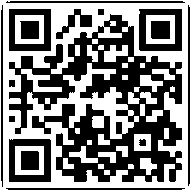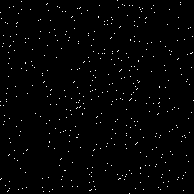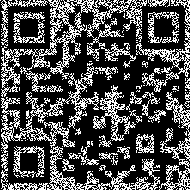Damaged two-dimensional code recognition method based on computational holography
A recognition method and computational holographic technology, applied in the direction of electromagnetic radiation induction, etc., can solve the problems of two-dimensional codes that are easily damaged, cannot be scanned and recognized, and are polluted, and achieve the effect of high feasibility and fast coding
- Summary
- Abstract
- Description
- Claims
- Application Information
AI Technical Summary
Problems solved by technology
Method used
Image
Examples
Embodiment
[0045] The present invention will be further described below in conjunction with the accompanying drawings. figure 1 It is an ordinary two-dimensional code generated by a computer. In the scheme of the present invention, the figure 1 coded as a hologram figure 2 , attach this hologram next to the normal QR code. When the normal QR code is damaged or contaminated, or both the normal QR code and the holographic QR code are damaged, by scanning the hologram on one side figure 2 , to get the complete QR code information.
[0046] Specific steps are as follows:
[0047] (1) Production and printing:
[0048] (1) Read the standard two-dimensional code by the method of picture reading, and carry out digital conversion to it, obtain the digital image of the standard two-dimensional code;
[0049] (2) Discrete Fourier transform is carried out to the digital image of standard two-dimensional code, obtains its spectral information;
[0050] (3) Construct the corresponding reference ...
PUM
 Login to View More
Login to View More Abstract
Description
Claims
Application Information
 Login to View More
Login to View More - R&D
- Intellectual Property
- Life Sciences
- Materials
- Tech Scout
- Unparalleled Data Quality
- Higher Quality Content
- 60% Fewer Hallucinations
Browse by: Latest US Patents, China's latest patents, Technical Efficacy Thesaurus, Application Domain, Technology Topic, Popular Technical Reports.
© 2025 PatSnap. All rights reserved.Legal|Privacy policy|Modern Slavery Act Transparency Statement|Sitemap|About US| Contact US: help@patsnap.com



